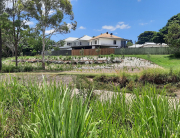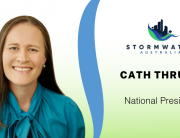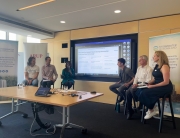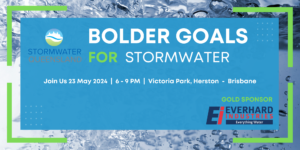Level 8
540 Wickham Street Fortitude Valley
QLD 4006
SQ Conference – Brisbane Roadshow Part 2
For those who couldn’t make it to Cairns for the SQ conference late last year, we’re featuring some of the highly-rated presentations, including further updates and developments.
Event Sponsor – Hydrorock
The stone wool solutions help protect people, property, infrastructure and the environment from the impacts of excess water. Hydrorock Australia works with consultants, universities, local councils, property developers, landscapers, residential property owners and sporting organizations to help manage their water management challenges in an innovative and effective way.
“Keep the water where you need it the most.” That is the mission of Hydrorock Australia.
Learn More – Hydrorock Australia Brochure
Speakers and Topics
Assessing the Impact of Urban Development on On-site Stormwater Detention on Regional Hydrology
Dr Rodney Ronalds, Principal Engineer, Michael Bale & Associates
Urban development is a contributor to increased peak runoff and adverse hydrologic effects in regional catchments. On-Site Stormwater Detention (OSD) is a common way to mitigate these problems, however it is well known that OSD can have the opposite effect when it is installed at inappropriate locations. Parameter uncertainty and the need for a probabilistic approach to hydrograph generation are also factors that add to concerns regarding our reliance on OSD for the protection of regional hydrology. This study contributes to awareness of these issues and a practical solution to the problem. A hydrologic model for Monte Carlo simulation of regional catchment hydrographs has been developed using interrelated modules based on previous studies. A sample of ten regional catchments has been modelled with three simulation scenarios: i) status quo, ii) a land parcel of varying sizes is urbanised at varying locations within the regional catchment, and iii) the urbanised land parcel includes OSD. The focus on the results has been the identification and analysis of two key parameters that influence the regional catchments’ peak runoff, being the size and location of the urbanised land parcel. A regression analysis of the model results has revealed recurring patterns that have been used to develop new equations for predicting the mean impact of urbanisation and OSD on regional catchment peak runoff. The study highlights the significance of rainfall pattern uncertainty and the importance of considering land parcel location in considering the need for OSD as part of urban land development projects.
Looking Forward: considering climate change and variability in managing the Great Barrier Reef
Lisa Walpole, Water Resources Engineer, Alluvium Consulting
It is widely acknowledged that climate change is one of the greatest threat to the Great Barrier Reef (GBR). In response, the primary focus of plans, strategies and actions to date has been to increase system resilience to shocks and pressures that may be exacerbated by climate change, such as improving water quality and managing invasive species. But is this enough? Following recent, unprecedented coral bleaching and extreme runoff events, the need for action which considers the future climatic state, rather than managing the system as a static state, has become apparent and the management response is beginning to reflect this need with a new sense of urgency. This presentation explores the outcomes of an evaluation of the current GBR management response at the strategic and operational level, and opportunities for targeted management responses which better reflect the future climate state and the multiple dimensions through which climate events threaten the condition of the reef. It will also reflect on outcomes of the Great Barrier Reef Foundation investment pathways prioritisation process, and the QWMN review of how climate change and climate variability is being represented in water models across Queensland to support decision making which considers a range of future climate states.









Leave A Comment
You must be logged in to post a comment.